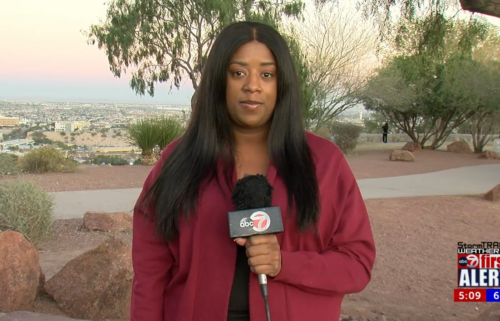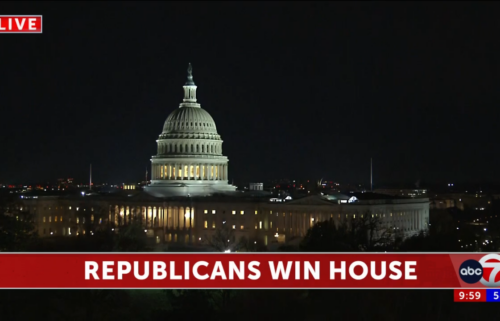Insurers plead with Supreme Court for $12 billion in government reimbursements for Obamacare
Insurers went to the Supreme Court on Tuesday seeking justice on $12 billion in Obamacare payments they say they are owed by the government.
During a lively hour-long argument, several justices suggested that the government had reneged on a promise, suggesting they may rule in favor of the insurers — who claim they are the victims of a “bait and switch of staggering dimensions.”
In the early days of the Affordable Care Act, insurers agreed to offer lower premiums to encourage participation in health care exchanges because the law guaranteed partial reimbursement for their losses. But the payments never came after Congress, then controlled by Republicans, ultimately declined to appropriate the money.
“Why doesn’t the government have to pay?” Justice Stephen Breyer asked at one point.
Breyer and Chief Justice John Roberts, among others, pointed to a risk mitigation program, written into the law, for insurers who might incur losses from 2014-2016.
“You don’t question that these insurance companies would not have participated,” Roberts asked the government lawyer, “but for the government’s promise to pay? “
The case does not concern the overall legality of the Affordable Care Act, but instead involves the initial three-year implementation period where insurers claim they suffered massive losses because of the lower premiums.
Yet the dispute comes as a federal appeals court is considering the government’s request to strike down the entire law in a separate dispute, and reflects the sometimes unexpected consequences of the deep partisan divides over President Barack Obama’s landmark legislative achievement.
“The government has to keep its word,” argued Paul Clement, a lawyer for the insurers who served as solicitor general under President George W. Bush.
He said that the insurers stepped up, despite inherent risk, to participate in exchanges based on “repeated assurances” that the government would honor its statutory obligation to share the risk if losses occurred.
Initially, Roberts suggested that lawyers for the insurers should have done more in the beginning to ensure that they would ultimately be reimbursed.
Roberts noted Clement’s argument that the insurance companies were “basically seduced into this program” but added that the insurers have “very good lawyers and the Constitution says no money shall come out of the Treasury except pursuant to an appropriations clause.”
“I would have thought at some point they would have sat down and said, ‘Well, why don’t we insist upon an appropriations provision before we put ourselves on the hook for $12 billion,’ ” Roberts said.
The risk corridor program
Insurers initially had a tough time setting premiums on the Obamacare exchanges since they didn’t know how sick their new customers would be. Many miscalculated in the early years, racking up billions in losses.
In late 2014, Republicans, led by Florida Sen. Marco Rubio, succeeded in requiring the program to be budget neutral after insurers had already set their 2014 rates.
In the end, insurers only received a fraction of the payments they requested because the amount far exceeded what was contributed. That huge shortfall forced some smaller insurers to shut their doors and prompted some others to stop offering coverage on the exchanges.
Insurers sued the Department of Health and Human Services, saying they were owed more than $12 billion in payments. Lower court rulings were mixed.
In February, four insurers — Moda Health Plan, Blue Cross and Blue Shield of North Carolina, Land of Lincoln and Maine Community Health Options — petitioned the Supreme Court to hear their appeal. Other groups, including the US Chamber of Commerce, the National Association of Insurance Commissioners and attorneys general in mainly blue states, have filed amicus briefs in support of the insurers.
The Trump administration response
Deputy Solicitor General Edwin Kneedler argued that the government should not have to pay for the losses because the payment was always “contingent on future appropriations.”
Several justices, including Roberts, pushed back hard.
Under the reimbursement program, which was designed to last only three years, insurers whose premiums exceeded claims paid into the fund, while their competitors who didn’t charge enough high enough rates were supposed to be able to draw from it.
Justice Elena Kagan noted that some insurers were required to “pay in” but that, according to the government, the government wasn’t required to “pay out.”
“What kind of a statute is that?” she queried.
Kneedler said that there was nothing in the law that created an “express contract” requiring the funds to be appropriated
Justice Brett Kavanaugh asked whether “every congressional promise to pay” is ultimately subject to an “implicit appropriations caveat.”
Kneedler was firm. “The insurance companies were not performing services for the government,” he said. “They were taking advantage of an opportunity in the private sector that Congress had established with a bunch of subsidies.”
An opinion in the case will likely come in several months. By then, the fate of the entire law might be in question depending upon how an appeals court rules in the separate challenge.




